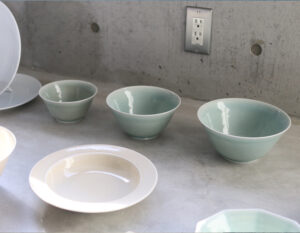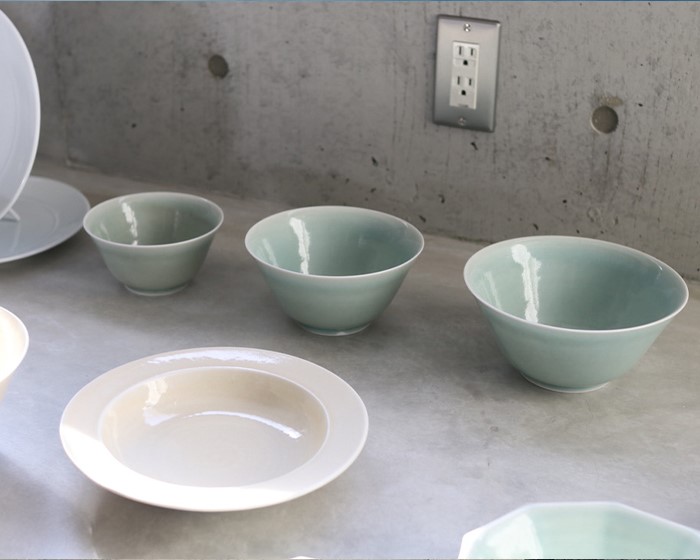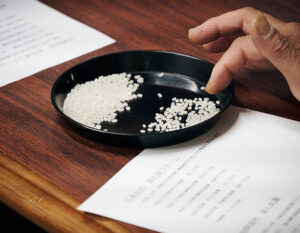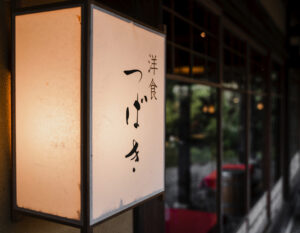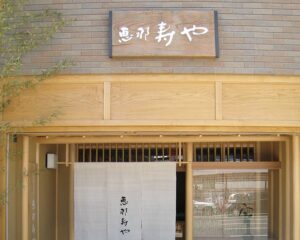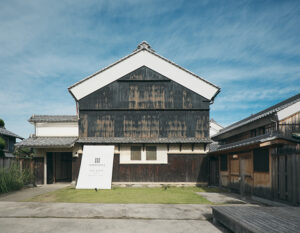Yuichi Murakami, whose studio is located in the pottery town of Toki City, Gifu Prefecture, is an up-and-coming ceramic artist who creates modern and practical vessels.
Not bound by any set style or material, his works have a sophisticated sense of balance in design and are comfortable to use.
All of his works are useful in our daily lives. They add color to cupboards and dining tables.
What Mingei means to Mr. Murakami
Mingei” (short for “folk craft”) was proposed by Yanagi Muneyoshi and others during the Taisho era (1912-1926). Mingei” is a term that refers to the daily items that the people have in their hands and that are always present in their daily lives. Yanagi believed that the beauty that emerges from practicality (beauty of use) can be found in daily necessities that are not rare, easily accessible, and ubiquitous, and that are made by unknown craftsmen. This new perspective has put the spotlight on handicrafts rooted in the cultural climate of each region. In a manner of speaking, the democratization and broadening of the definition of crafts resonated with many potters and artists, and it is said to have penetrated the world of craftsmanship as a uniquely Japanese aesthetic. The idea of “mingei,” or ” crafts of the people by the people for the people, ” has been handed down unchanged in contemporary craftsmanship.
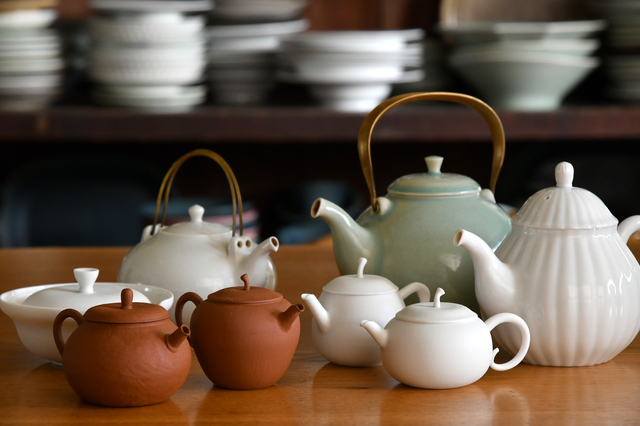
Mingei, as I see it, means “integrity. Mingei, in my opinion, is ‘integrity.’ It means accepting the materials available at the time and making good products at prices that ordinary consumers can afford. I entered the world of mingei without knowing what it was, and I am still learning, but I think it is important to make things that fit the current lifestyle,” says ceramic artist Yuichi Murakami. He is an up-and-coming artist who has a studio in Toki City, located in the southeastern part of Gifu Prefecture, the city of pottery, and produces a wide variety of vessels. His lake-inspired plate series, such as “Kosui Iro” and “Usuboku Iro,” expresses a unique sense of color through the use of variegated colors and patterns created by the kiln’s Yohhen process. The white porcelain, which dares to make use of industrial whiteness, has a slightly thicker rim to make it easy to use in daily life and to give it a functional beauty. Without adhering to any particular style or material, Murakami’s style is to incorporate the atmosphere of the times into usability and express it in modern vessels. What cannot be overlooked when talking about Murakami is the presence of tea utensils. He says that his love of drinking tea led him to make Chinese tea utensils. Inevitably, he was lured into the world of Chinese tea, and he has received numerous inquiries from tea lovers in China, Taiwan, and other countries. His passion for tea is reflected in each of his works. The works are for daily use, but they also showcase the fine handiwork of the artist.

The roots of ceramic artist Yuichi Murakami and the works he creates
The roots of Yuichi Murakami’s work can be traced back to a trip he undertook after graduating from high school, in which he traveled on foot around the country to visit manufacturing sites. Starting from Setagaya-ku, Tokyo, where he was born and raised, he decided only to head south and walked wherever his fancy took him. No train, no bus, no hitchhiking. I just walked and walked and walked. The first manufacturing site I encountered was “Igawa Menpa” in Shizuoka Prefecture. The beautiful luster of natural lacquer is a characteristic of this curved product. I was fascinated by the craftsmen’s skillful workmanship. He traveled to Echizen, Fukui Prefecture, to try his hand at making a bento box himself, grabbing a log and a chisel and whittling away at the work. If he wanted to see Wajima lacquerware, he would head to Ishikawa Prefecture. Sometimes he would sleep in a sleeping bag on the grounds of a shrine or in an unmanned train station. After a year of walking, he arrived in Okinawa, where he met Yamada Shinman, a highly acclaimed and award-winning ceramic artist, both in Japan and abroad. Before coming to Okinawa, his only experience with pottery was at a studio run by a relative on his father’s side. There, he made a hand-biwn cup, which was his first experience with ceramic clay. At that time, he was still not interested in pottery, but when he came across Mr. Yamada’s work, he was so struck by his work that he began to study under Mr. Yamada. After five years of training in yachimun, he entered the Tajimi City Ceramic Design Institute, a research institute for ceramics managed and operated by the city of Tajimi. After facing pottery from a different angle from his previous experience and deepening his study, he started his own business. He says that this seemingly inefficient and roundabout path helped him to discover early on how his pottery should be used in people’s daily lives.
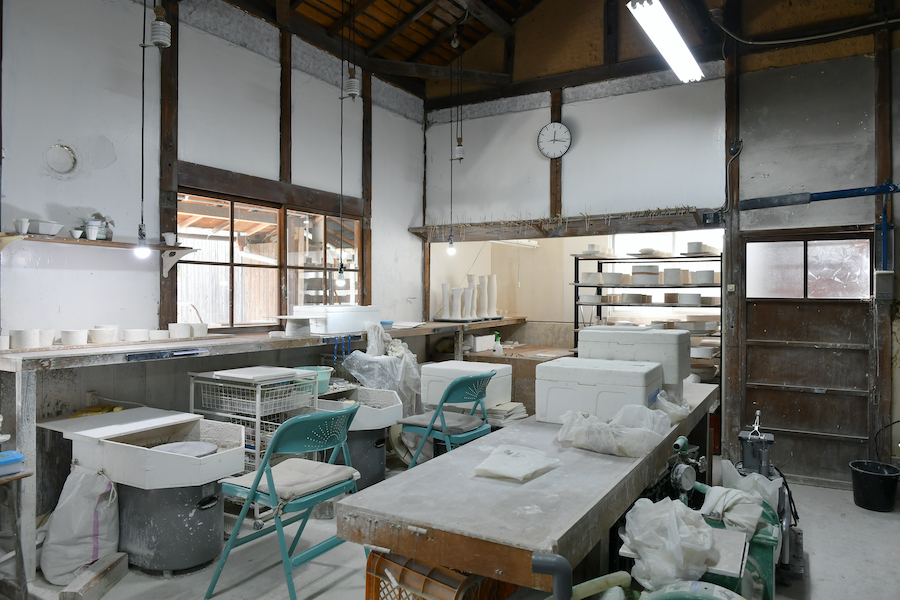
Recently,” Murakami says, “I have a renewed sense that my identity is in Tokyo. Just as when he was young, he used to style items he selected based on his intuition by visiting vintage clothing stores and antique stores, he creates modern yet stylish vessels that are comfortable to use. Craftsmanship that is close to the feelings of the user and a unique perspective that only an urban dweller could have. This is a world view that only Mr. Murakami can create. If you are in need of something new in your daily life, we hope you will try some of Murakami’s dishes. His sense of taste combined in just the right balance will create an unexpected harmony that will elevate your cupboards and dining table to a higher level.
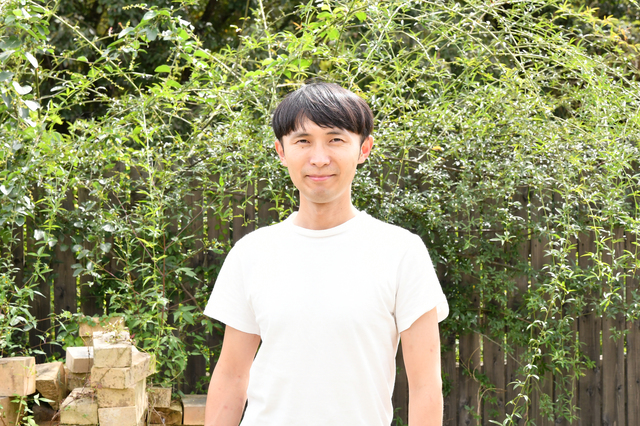
I make a wide variety of pottery works of various designs, including tea sets and flower vases, but I especially recommend the Okinawan bowls called “makai. They are very functional bowls, so please check them out. While vessels for special occasions are wonderful, I would like my works to be used more and more in your daily life.
